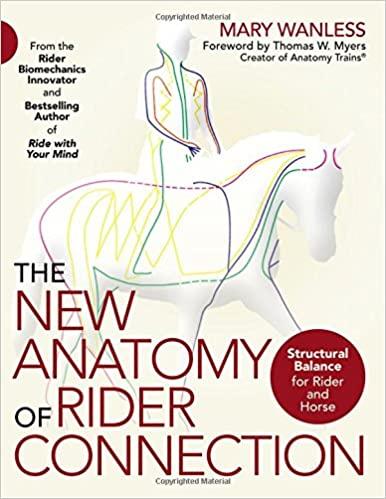
They say you should never meet your idols and while I have been to a Paul McCartney concert, meeting Mary Wanless was about as amazing as a rock concert. In May I attended a Mary Wanless Clinic. I have had her books on my shelf since before I can remember; in fact, Ride With Your Mind is one of the first horse book that I ever read. The moment I discovered I could audit her clinic literally right up the road, I immediately jumped on the opportunity.
It was an incredibly hot day in May — one of those days where the breeze almost felt hotter than the ambient air. I pulled into the other side of Loch Moy Farms (who knew they had an indoor over there) and walked into an arena not knowing my mind was about to be rocked.
I am not going to lie when I say I had high expectations for this clinic. I had read cover-to-cover many books before but none of them had it me as hard as The New Anatomy of Rider Connection. This book came out at a time when I was deeply immersed in anatomy trains and the importance of facia through my yoga teacher training. When I saw that Mary Wanless had applied the anatomy trains not only to the rider but to the horse I was hooked. I have read this book at least three times and every time I pick it up, I am learning something new.
If you are a total nerd for anatomy and physiology like me, this book is for you. However, if you are just looking to ride better, this book is also for you. That was one of the things that amazed me about Mary’s teaching style: she could meet the rider at the level they are at.
Whether that was a young girl just taking her first canter steps or a professional dressage rider, Mary’s knowledge of the rider’s body could talk circles around me, and I consider myself pretty well versed in the body (I have a four year degree in Kinesiology with a concentration in exercise science, have been a personal trainer for close to ten years and spent the last two years working for a physical therapy practice). That said I have dedicated my life to learning about the body, and it excites me when I find somebody who is truly a master of their craft.

AND she signed the book!
I missed the first day of the clinic because I had to work (damn mortgages). If I could go back in time, I would have rearranged to be there all three days, preferably with a horse but that was not meant to be at this time. I walked into the second day thinking I have read this book I can catch on and I did but I would have loved to see the transformation in the riders way of going across all three days.
The biggest take away and what I am bringing back to you is the kneel exercise she taught on the second days lecture portion. This is a great way to determine if you are relying more heavily on your Superficial Back Line or your Superficial Front Line — these lines are the fascia trains that make up everyone’s body.
So what is fascia? According to Google, “Fascia is a thin casing of connective tissue that surrounds and holds every organ, blood vessel, bone, nerve fiber and muscle in place. The tissue does more than provide internal structure; fascia has nerves that make it almost as sensitive as skin.” It has been said that if you were to take everything else out of the body and only leave the fascia you would still be able to recognize the person in front of you. It was thought for many years in western medicine that fascia was mostly inert. But how could something so pervasive be useless? The simple is answer is: it is not!
If you haven’t heard of this, read the book! If you have heard of it, good! This should interest you… READ THE BOOK. There is a reason it’s a book and not a blog post. The concepts simply can not be boiled down into a cliff notes version.
This exercise is quite hard on the knees, so I do not recommend this for those that struggle with knee pain. I also do not recommend doing it to muscle failure, but rather use it as a fact-finding mission.

1: Start by kneeling on even ground.

2. Place your hands on your stomach and you back just above your pelvis with your palms flat.

3. Engage through your core keep you tail bone tucked under.
4. Lift up by leading with your belt buckle, so that your hips are over top of your knees.
The goal of this exercise is to keep even pressure on your hands and not round your back or arch your back as you go through the range of motion. If you do round or arch your back, this is telling:

If you tend to round your back, you are stronger on your superficial front line.

If your tendency is to arch your back to come up, you’re more tight in you superficial back line.
If your tendency is to round your back, you are strong on your superficial front line. This means your tendency would be to be to get into more of a crouched position in the saddle.
If your tendency is to arch your back to come up, you’re more tight in you superficial back line. This means that you will more likely lean back in the saddle and get into more on a water skiing position. Continue to work on this exercise until you can keep even pressure on your stomach and back.
Want more Rider Physiology? Read Horse Nation’s review of The New Anatomy of Rider Connection here.


















